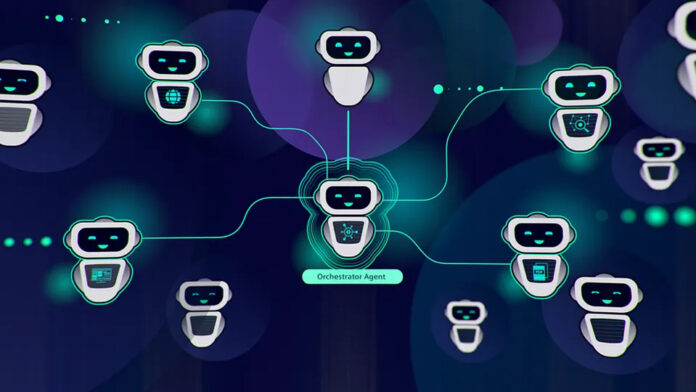Industrial agentic AI – Siemens has unveiled AI agents that work autonomously across design, planning, engineering, operations, and service – coordinated by a generative AI co-pilot interface.
Industry 4.0 to 5.0 – marks a shift from automated assistance to orchestrated autonomy, with agents reasoning, collaborating, and executing tasks independently – heralding a new phase of industrial transformation.
Third-party agents – Siemens plans to host both Siemens-made and third-party AI agents on its Xcelerator platform, promising up to 50% productivity gains through scalable multi-agent interoperability.
Automate 2025, Detroit: Siemens has claimed a major leap in the race for autonomous automation in Industry 4.0 with the arrival of a new industrial-geared agentic AI system – which can be set to work when a factory worker gives his generative AI ‘co-pilot’ the green light to direct an expanding stable of digital and physical (robot) agents to run riot with analytics and actions. And in ways, it has lit the blue touch paper on Industry 5.0.
At the heart of this shift is the emergence of industrial agentic AI – not just smart assistants, but a collection of software agents that collaborate in a reasoning system to initiate and execute complex tasks. Siemens has a bunch of them in the pipe, it says, for industrial design, planning, engineering, operations, and service – which, on command from a generative AI co-pilot dashboard, will go to work to solve efficiencies and drive innovations.
That is the theory. The German juggernaut rather called it “automating automation”, and announced new agent orchestration software which (“like a craftsman”) deploys a “toolbox of specialized agents to solve complex tasks across the entire industrial value chain”, it said. It said it will release Siemens-made and third-party AI agents on its Xcelerator platform / marketplace, pre-tested and pre-approved for “multi-AI-agent” interoperability.
It also listed a release schedule for new industrial co-pilot interfaces, serving as the interface between human intent and machine autonomy, blurring the line between command and cognition – and elevating familiar old Industry 4.0 automation into something more dynamic, distributed, and self-directed. It has a roster of co-pilots already; these will be expanded, it said, with new natural language dashboards for new agents, as they come available.
It said its product design co-pilot (Design Copilot), already available for NX CAD, will be followed by a production planning co-pilot (currently in pre-release), an engineering and coding copilot (coming in 2025), plant operations co-pilot (available for Insights Hub, to be expanded in 2025), and maintenance services co-pilot (from Siemens-owned Senseye; available now) will each have agents available with them – the message goes.
Its plan to grow an Xcelerator marketplace for AI agents is a stated “future vision”, it clarified. Industrial productivity will increase by “up to 50 percent” with this marriage of generative and agentic AI, it suggested. Its approach “distinguishes between industrial co-pilots, the interfaces users interact with, and the AI agents that power them behind the scenes”, and seeks to develop digital agents and also integrate physical ones, including AMRs and AGVs.
It stated: “This way, Siemens is creating a comprehensive multi-AI-agent system where agents are highly connected and work collaboratively. What sets Siemens’ approach apart is the orchestration of these agents utilizing a comprehensive ecosystem. These agents not only work with other Siemens agents but also integrate with third-party agents, enabling unprecedented levels of interoperability.”
Rainer Brehm, chief executive for factory automation in the digital industries division at Siemens, commented: “With our industrial AI agents, we are moving beyond the question-answer paradigm to create systems that can independently execute complete industrial workflows. By automating automation itself, we envision productivity increases of up to 50 percent for our customers – fundamentally changing what is possible in industrial operations.”
He cited industrial agentic / generative AI deployments with powertrain and battery assembly company Thyssenkrupp Automation Engineering (“reported improvements in code quality and development speed”) and at a Siemens electric motor factory in Bad Neustadt (“by turning scattered data into actionable insights”). “In a factory environment, our industrial AI agents connect different copilots and automate workflows across the entire value chain,” he said.
“This creates a unified approach that makes industrial AI accessible to everyone, regardless of their technical background or experience level. We envision a future where Industrial AI agents work seamlessly alongside human workers, handling routine processes independently while enabling humans to focus on innovation, creativity, and complex problem-solving.”

